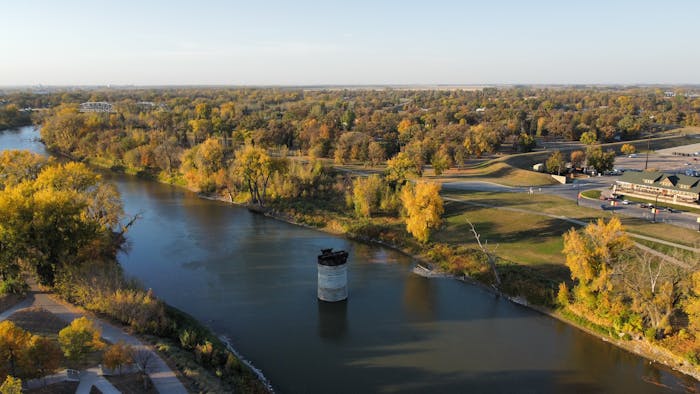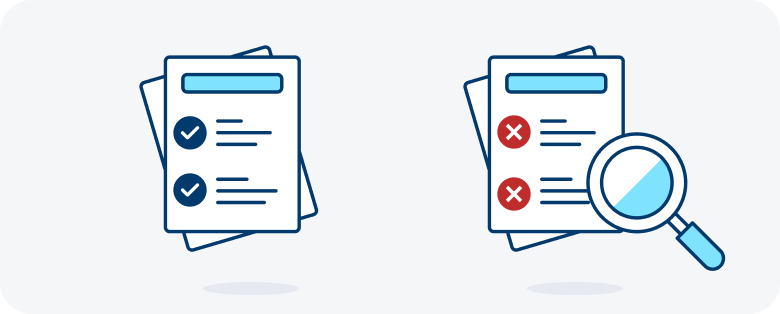Squatters are one headache that no North Dakota landlord wants to face. These unauthorized occupants can cause significant damage, disrupt rental income, and in some cases, lay claim to the property through a legal process known as adverse possession.
To protect your property rights and take appropriate action against squatters, it’s essential to understand the intricacies of North Dakota’s landlord-tenant laws, squatter’s rights, and adverse possession laws.
Want to learn more about your rights as a North Dakota landlord? Read on to discover how to address the issue of squatters and protect your property effectively.
Squatters want to live in your vacant properties. Use our free landlord software to market your properties, screen potential tenants, create lease agreements, and fill vacancies faster.
Trespassers vs. Squatters
A trespasser is someone who enters a property without permission for a short period, often without the intent to stay. A squatter, on the other hand, occupies a property for an extended period with the intent to claim ownership. It’s crucial to address trespassing issues quickly to prevent them from escalating into a squatter situation. Early intervention can deter further intrusion, minimize property damage, and avoid legal complications.
Legality of Squatting in North Dakota
Squatting itself is not explicitly legal in North Dakota, but it can become a legal issue through adverse possession. This occurs when a squatter occupies a property for a specific period (typically 20 years or 10 years with tax payments or color of title) without permission.
Potential legal consequences of squatting include criminal trespassing charges, property damage costs, and potential loss of property rights through adverse possession. Therefore, addressing trespassing issues promptly is crucial to prevent them from escalating into a squatter situation.
Squatters Rights and Adverse Possession Laws in North Dakota
Adverse possession is a legal mechanism that allows a person to claim ownership of another’s property after occupying it for a specific period. In North Dakota, squatters can use adverse possession to claim property after 20 years of continuous, open, and hostile possession. Adverse possession laws vary by state, so understanding North Dakota’s specific laws is essential.
How North Dakota Squatters Can Legally Claim Property Through Adverse Possession
Losing property to adverse possession means that a squatter, through years of unlawful occupation, has legally claimed ownership of your property. While adverse possession claims in North Dakota are challenging for squatters to fulfill, it’s crucial to be vigilant to prevent such situations.
To successfully claim property through adverse possession in North Dakota, a squatter must meet the following requirements:
- Hostile: The occupation must be without the property owner’s permission.
- Continuous: The occupation must be uninterrupted for the required period.
- Open and notorious: The occupation must be visible and obvious to the property owner.
- Exclusive: The squatter must have exclusive possession of the property.
To fulfill the possession requirement for adverse possession in North Dakota, a squatter must meet one of the following conditions:
- 20 years of continuous possession: The squatter must occupy the property continuously for 20 years without the owner’s permission (§ 28-01-04).
- 10 years of continuous possession with tax payment: The squatter must occupy the property continuously for 10 years and pay property taxes on the land (§ 47-06-03).
- 10 years of continuous possession with color of title: The squatter must occupy the property continuously for 10 years based on a defective or invalid deed or other document of title (§ 28-01-04).
By understanding these requirements and taking proactive measures to monitor your property, you can significantly reduce the risk of losing it to adverse possession.
Landlord Rights & Responsibilities
Landlords in North Dakota have the right to evict squatters through the legal eviction process. This involves serving a notice to quit, filing a complaint in court, and obtaining a judgment for possession. Landlords also have the right to recover damages caused by the squatter’s occupation.
However, landlords must follow specific procedures and comply with North Dakota’s landlord-tenant laws. They cannot forcibly remove a squatter or take matters into their own hands, as this could lead to legal consequences. It’s crucial for landlords to consult with an attorney to ensure they take the appropriate steps to protect their property rights.
Squatters Rights & Responsibilities
Squatters have no legal rights to occupy someone else’s property. Even if the property is abandoned or unoccupied, squatting is considered trespassing which can lead to legal consequences. Squatters have no right to sell, mortgage, rent, or transfer the property they are occupying. Any attempt to do so has no legal validity. While occupying someone else’s property, squatters have no more rights than a trespasser.
How to Evict Squatters in North Dakota
Here’s a step-by-step guide to evicting a squatter in North Dakota:
- Gather evidence: The first step is to gather as much evidence as possible that the squatters have overtaken your property and have no legal right to be there.
- Serve a Notice to Quit: This is a formal legal document that orders the squatter to vacate the property within a specific timeframe. In North Dakota, this is typically a 3-day notice.
- File an eviction complaint: If the squatter fails to leave, you’ll need to file a formal eviction complaint in the local district court.
- Court hearing: A court hearing will be scheduled to determine the legality of the eviction.
- Eviction order: If the court rules in your favor, you’ll receive an eviction order.
- Sheriff’s eviction: The sheriff will enforce the eviction order and remove the squatter from the property.
Important note: Self-help evictions, such as changing locks or removing the squatter’s belongings, are illegal in North Dakota. Landlords must follow the legal eviction process to avoid legal consequences.
Legal Help for Landlords in North Dakota
Landlords in North Dakota dealing with squatters can find valuable resources to help them navigate the legal process and protect their property rights. Here are a few online resources:
- Nolo: Nolo provides legal information and self-help tools for individuals. Their website offers information on landlord-tenant law, including eviction procedures and how to deal with squatters.
- North Dakota Bar Association: The North Dakota State Bar Association offers free legal resources and can help landlords find an attorney specializing in landlord-tenant law.
- North Dakota Legal Services: This organization provides free legal assistance to low-income individuals in North Dakota, including assistance with landlord-tenant disputes and evictions.
- EZ Evict USA: TurboTenant’s partnership with EZ Evict USA takes the time-intensive process of evictions off your plate.
Preventing Future Squatter Situations
Here are some proactive measures landlords can take to prevent squatters and safeguard their property:
- Regular inspections: Perform routine property inspections, particularly for vacant units. This helps spot potential problems early and discourages squatters from settling in.
- Secure entry points: Ensure all doors, windows, and other access points are properly secured and in good condition. Installing security bars or alarms can provide additional protection.
- Ongoing property maintenance: A well-kept property is less likely to attract squatters. Regularly mow the lawn, clear debris, and promptly address any maintenance issues.
- Install security cameras: Surveillance cameras act as a deterrent for squatters and can provide valuable evidence if needed.
- Display “no trespassing” signs: Visible “No Trespassing” signs can help prevent unauthorized access to your property.
- Hire a property management company: A professional property management company can closely monitor your property and take swift action if any issues arise.
By implementing these preventive measures, landlords can greatly reduce the risk of squatter problems and protect their property investments.
How Property Management Software Can Help
TurboTenant’s property management software can be a powerful tool for landlords to fill vacancies quickly and efficiently, minimizing the risk of squatters occupying their properties. By streamlining the rental process and attracting qualified tenants, TurboTenant helps landlords maintain control over their properties.
Here are some of TurboTenant’s key features that can help prevent squatter situations:
- Fast and easy rental advertising: TurboTenant allows you to list your property on multiple platforms with a single click, reaching a wider audience of potential tenants. This helps you fill vacancies faster and reduce the likelihood of unauthorized occupancy.
- North Dakota-specific lease agreements: TurboTenant offers pre-approved lease templates tailored to North Dakota laws, ensuring that your leases are legally compliant and protect your rights.
- Automated rental applications: TurboTenant’s online rental application process simplifies the screening process and allows you to identify qualified tenants quickly.
- Tenant screening: TurboTenant’s built-in tenant screening tool helps you assess potential tenants’ credit history, criminal background, and rental history, reducing the risk of renting to problematic individuals.
By utilizing TurboTenant’s features, you can streamline your property management process, attract quality tenants, and minimize the risk of squatter issues. Sign up for a free TurboTenant account today and take control of your rental properties.
Squatters Rights North Dakota FAQs
Is squatting legal in North Dakota?
No, squatting is not legal in North Dakota.
What is the shortest time for squatters rights in North Dakota?
10 years with tax payments or color of title.
How much does it cost to evict someone in North Dakota?
Eviction costs in North Dakota vary based on factors like attorney fees and court costs.
Can you evict someone in the winter in North Dakota?
Yes, you can evict someone in the winter in North Dakota, but there may be legal restrictions on evictions during severe weather conditions.




